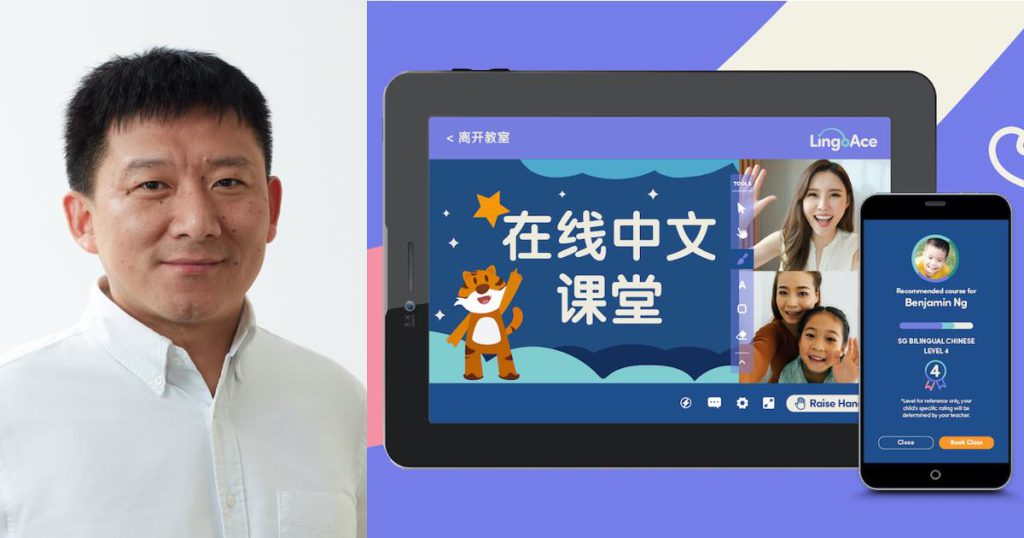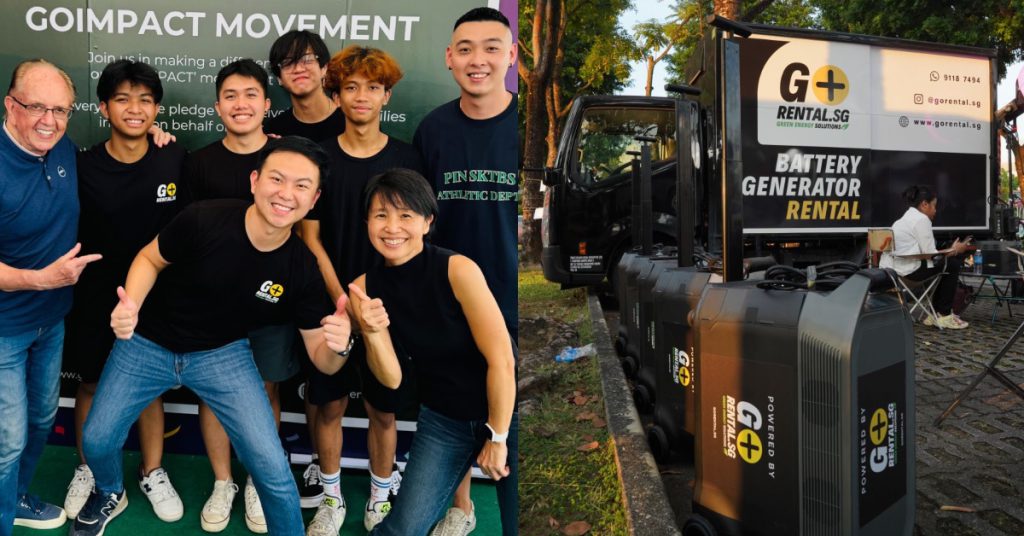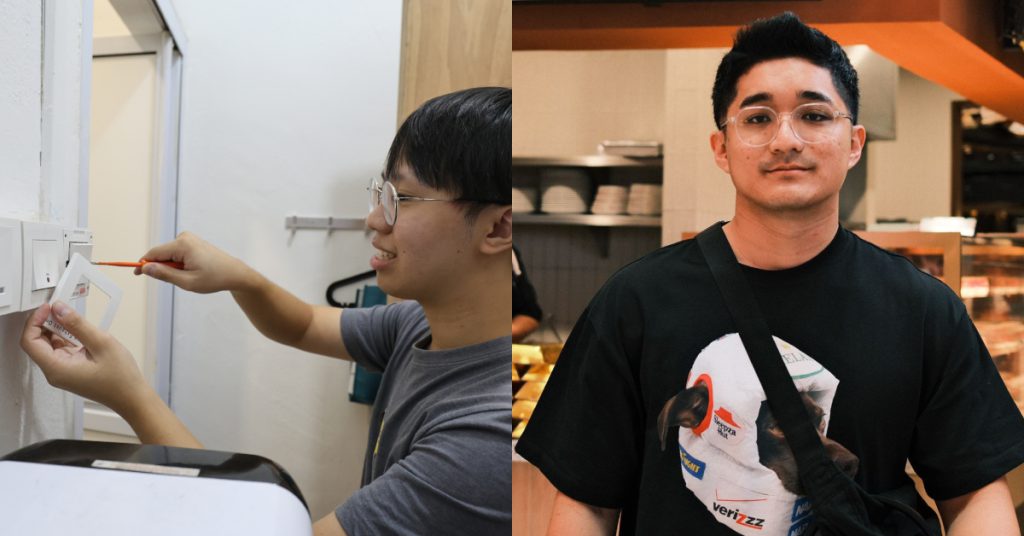Learning Chinese can be tricky, especially since the language has more than 7,000 special characters and is a tonal language.
But when Hugh Yao, 45, moved from Beijing to Singapore for work more than a decade ago, he did not expect his son to struggle learning the language.
Realising that his son’s struggles were “quite common” for students learning Chinese overseas who may have different backgrounds and nationalities, and there was no global brand for Chinese language education, Hugh noticed a business opportunity.
Armed with 15 years of experience in the tech space with companies like IBM and Oracle, Hugh founded LingoAce in 2017 — with his son enrolled as the company’s first student.
Using gamification, LingoAce makes learning Chinese easy and fun for children aged between three and 15 years old. Today, it is used by students across more than 100 countries who have completed more than two million hours of classes.
The edtech company was also recognised in GSV EdTech 150 in January, and it is the only Singapore-based company to be listed. It also raised a significant US$160 million funding last year, following its previous US$105 million Series C round that closed in December.
Transforming the way Chinese is learnt

Traditional ways of learning Chinese often have a heavy emphasis on rote memorisation and repetition. However, being able to learn a new language requires context, engagement and immersion.
– Hugh Yao, founder and CEO of LingoAce
Through the use of animations, gamification and artificial intelligence, LingoAce “offers an immersive online environment designed to maximise teacher and student interaction”, allowing them to stand out from other language tuition providers and platforms, he added.
Unlike traditional forms of learning Chinese which involves memorisation, LingoAce turns studying into a fun and interactive game that is tailored to students’ needs with six different programmes.
“For example, a lesson can start off with a virtual playground or garden, where kids are guided by the teacher to click through the landscape and play different word games,” shared Hugh.
Students go through a one-on-one class with one of LingoAce’s teachers online, going through fun games and exercises. These classes start from S$21, depending on the programme.
Changing appetite towards online learning
At LingoAce, we believe that leveraging technology in learning a new language like Chinese can be fun, engaging and personalised for better outcomes.
Digital classrooms and online learning programs can be a powerful enabler in building customised learning paths to cater to a variety of learning needs.
– Hugh Yao, founder and CEO of LingoAce
However, getting parents to try out LingoAce was a challenge when it first started in 2017, as they were used to traditional tuition classes held physically and were sceptical about the use of technology.
As such, Hugh introduced trial classes, allowing parents and students to test their curriculum and witness LingoAce’s impact first-hand — this is something that the company still offers today.

“Many of our parents then became strong advocates for our brand because they have witnessed LingoAce’s online learning delivery and the benefits it brings,” said Hugh, adding that 60 per cent of its students are referred globally.
“Word of mouth continues to be the most authentic way of gaining appreciation for online learning. This is also the reason why we are highly focused on delivering the best online learning experiences.”
The pandemic also helped LingoAce propel its growth as parents were forced to adapt to home-based learning. The company saw a 4,000 per cent increase in bookings internationally since the end of 2019, and a 2,000 per cent increase in Southeast Asia since 2020.
For Hugh, parents’ feedback towards LingoAce during this period makes him proud of the work he and his company has achieved.
“At the beginning of the pandemic… I received feedback from one of our parents remarking that she would be extremely happy if online learning offered by schools could be at 50 per cent of what LingoAce offers,” Hugh recalled.
Such comments spur Hugh and his team at LingoAce’s motivation to improve their products.
“In Thailand, we have revamped our Foundation programme that is uniquely designed for non-heritage speakers with limited Mandarin learning resources in their daily life,” said Hugh.
“It provides an easy and convenient solution to a large population of learners who may already be enrolled in Mandarin lessons but need more exposure, and to non-heritage learners seeking suitable and efficient online resources to meet their needs.”
Building the right team is a challenge

He also shared that aside from the fulfilment of helping students learn Chinese internationally, being able to fuel the passion for edtech among his talents was another achievement.
When Hugh first founded LingoAce, finding talent was a struggle as the edtech space was relatively new.
In Southeast Asia, we’ve had to be resourceful in hiring core talent from a wider pool, such as from the e-commerce and fintech startup communities.
Many of (our talents) hail from the traditional education industry, and today they get to do what they love while enjoying a strong growth trajectory in their careers. We see teammates who have developed global views, growing from managing country level portfolios to regional responsibilities.
– Hugh Yao, founder and CEO of LingoAce
Today, the company has grown to more than 4,000 teachers and six offices internationally aside from its Singapore headquarters.
Edtech will continue to see a boom

According to Grand View Research, the global edtech industry was valued at US$89 billion in 2020, and will grow to US$377 billion by 2028, with the K-12 sector dominating 41.2 per cent.
“LingoAce has been on a rapid growth trajectory and has quickly become the world’s leading online platform for kids learning Mandarin, with ambitions to become much more,” said Hugh.
While a large percentage of its growth has been fuelled by the pandemic, he believes that demand for online learning will continue as a supplement for in-person and school education.
The company plans to open a new office in Malaysia in 2022, and is in the midst of developing a new English language programme.
“While LingoAce has built its industry leadership on the back of its Chinese offering, we also have plans to further develop new English language programs and explore other subjects to meet the continuing demand for education globally especially when English remains the lingua franca in many regions,” said Hugh.
Beyond expansion, LingoAce is currently testing new curriculum features in Singapore to enhance student engagement and learning outcomes. It is also working to allow more families to access its tech without “affordability or accessibility barriers”.
“Not only are our products designed to cater to varying language proficiencies, we are also ensuring our products are able to meet our customers’ needs at comfortable price points,” Hugh shared.
“Our vision is to open up future possibilities for every learner in this interconnected world, and we want to make sure everyone is able to enjoy these new possibilities.”
Featured Image Credit: Hugh Yao / LingoAce










